The traditional homeland of the Luiseño was in the area of the San Luis Rey River and their name, given to them by the Spanish, comes from the San Luis Rey de Francia mission which was established in their territory in 1798. The aboriginal name for the Luiseño is presently unknown.
In her entry on the Luiseño in the Encyclopedia of North American Indians, Louise Jeffrado-Warden writes:
“Ecologically diverse, the territory of the Luiseños lay mostly in northern San Diego and southern Riverside counties, where more than one thousand years ago Luiseño bands founded villages with strictly delineated land and resource holdings. Only with precise permission could one group enter into another group’s domain to exploit specific properties such as gardens or groves.”
The map shown above shows the territories of the six Southern California Indian nations.
The California missions were intended to be run as plantations with Indians providing the necessary slave labor. About 1815, the Mission San Luis Rey established Rancho San Jacinto as one of their cattle ranches and brought in Luiseño Indians to work on the ranch. Some of the original Cahuilla Indians were still living in the area and intermarried with the Luiseños.
After Mexican Independence, the California missions were secularized and in 1842 the Rancho San Jacinto land was granted to a non-Indian with the stipulation that the rights and well-being of the Soboba Indians be respected. By 1880, most of the Rancho San Jacinto lands had been sold and the Soboba people had no legal claim to their land.
In 1883, President Chester Arthur established the Soboba Indian Reservation by Executive Order. However, the Executive Order only set aside public lands and the Soboba village site and its cultivated lands were privately held. The Sobabas would not get legal title to this land until 1911.
At the present time, the Soboba Indian Reservation contains about 7,000 acres and the Sobaba Band has about 1,200 enrolled tribal members.
 One of the displays in the Riverside Metropolitan Museum in Riverside, California, looks the the Soboba Indian Reservation.
One of the displays in the Riverside Metropolitan Museum in Riverside, California, looks the the Soboba Indian Reservation.
The Noli Indian School, on the Soboba Indian Reservation, includes cultural classes. According Tashina Miranda Ornelas in the display on Soboba in the Riverside Metropolitan Museum:
“Culture classes provide a range of topics relating to Southern California Native People’s customs, history, language and traditions, with a major emphasis in Cahuilla/Luiseño communities.”
The Culture Department at the Noli Indian School established a traditional basketweaving program in 2005. According Tashina Miranda Ornelas:
“Noli is working toward providing more opportunities and courses that are specifically geared toward students who wish to enhance their basketweaving skills and further their plant awareness.”
Today there are many Soboba weavers and some of their works were exhibited in the Cahuilla Continuum Exhibition in the Riverside Metropolitan Museum.
Rosemary Morillo, former chair of the Soboba Band of Luiseño Indians, writes:
“Through the generations, we lose a lot of things because of progress and modernization. Yet, when we see baskets made by weavers of this region, we are able to see our culture and our history as it has always been. They are representations of the generations past and future. The beauty of these baskets has never changed.”
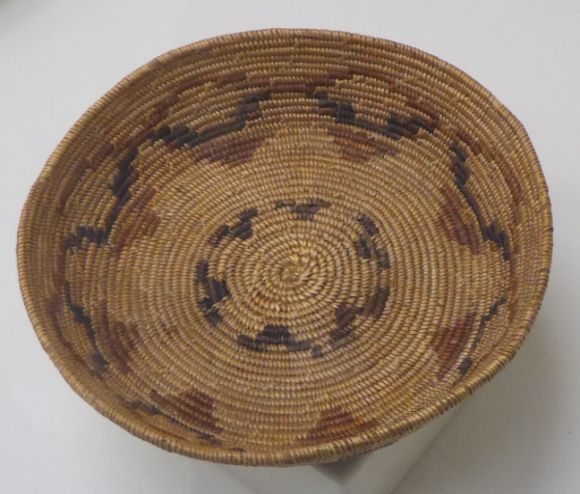 Shown above is a basket bowl (kávamal) made in the 1890s.
Shown above is a basket bowl (kávamal) made in the 1890s. 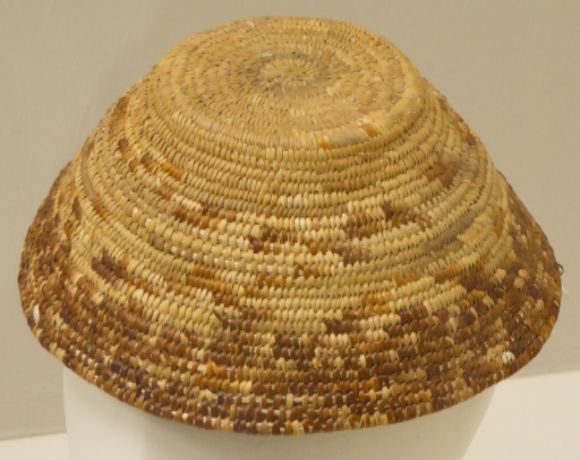 Shown above is a basketry hat made by Carrie Garcia in 2014.
Shown above is a basketry hat made by Carrie Garcia in 2014. 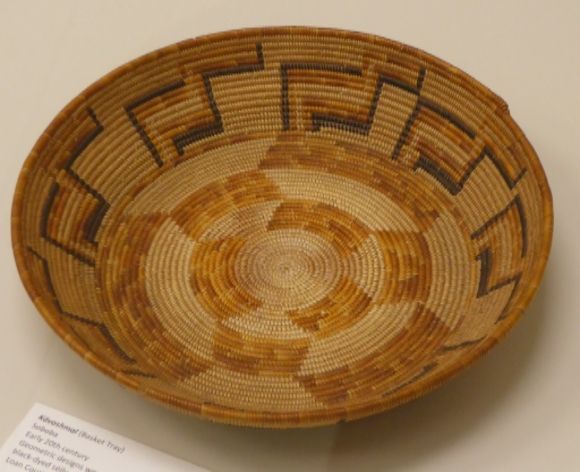 Shown above is a basket tray (kávashmal) made in the early twentieth century.
Shown above is a basket tray (kávashmal) made in the early twentieth century. 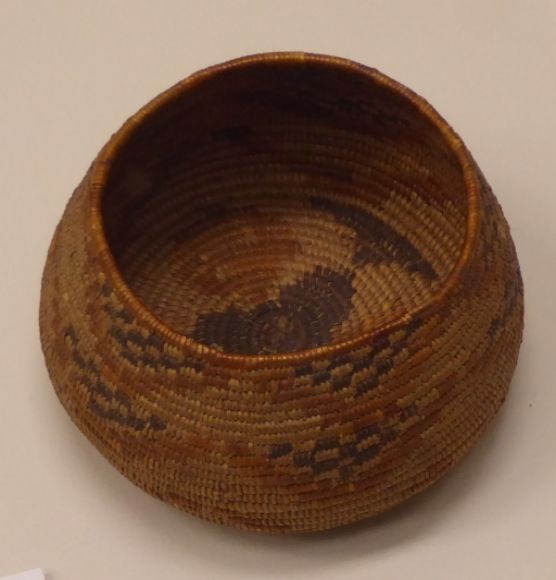 Shown above is a basket bowl (kávamal) made in the 1890s.
Shown above is a basket bowl (kávamal) made in the 1890s.  Shown above a basket tray (kávashmal) made by Sue Hill about 2009. The checkered pattern is difficult to weave as it requires frequent switching of basket materials.
Shown above a basket tray (kávashmal) made by Sue Hill about 2009. The checkered pattern is difficult to weave as it requires frequent switching of basket materials. 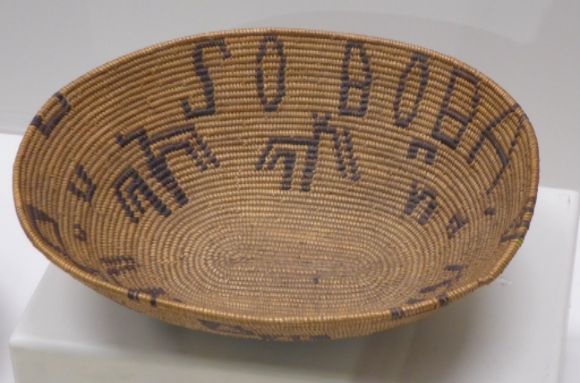 Shown above is an oval basket tray (kávashmal) made in the 1890s.
Shown above is an oval basket tray (kávashmal) made in the 1890s. 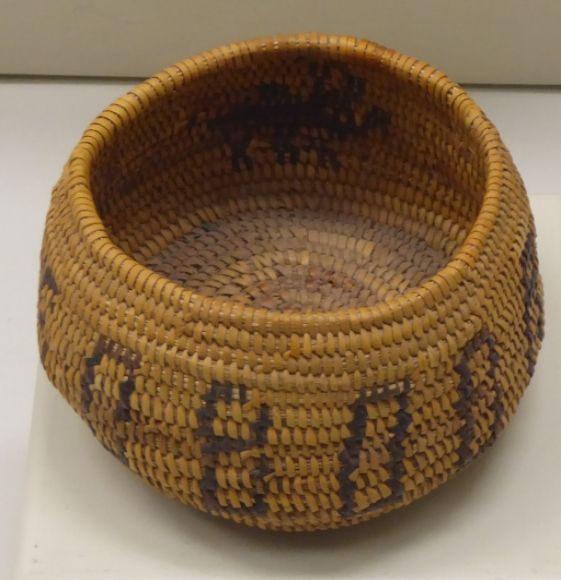 Shown above is a small basket from the early twentieth century with the word “Sobaba” woven on one side and a rabbit design on the other side.
Shown above is a small basket from the early twentieth century with the word “Sobaba” woven on one side and a rabbit design on the other side. 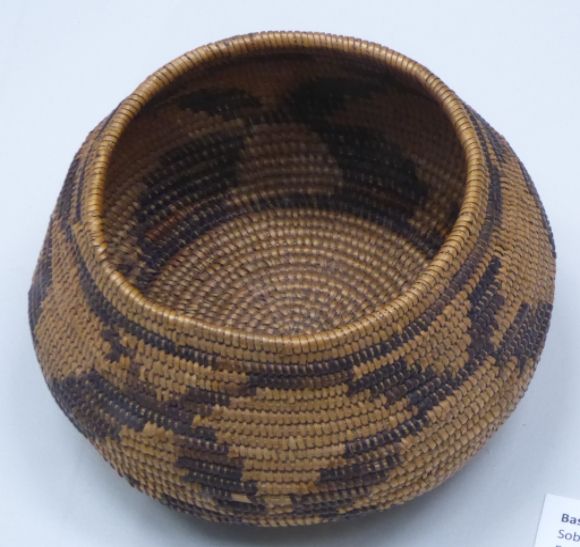 Shown above is a basket bowl from the early twentieth century.
Shown above is a basket bowl from the early twentieth century.  Shown above is a basket tray (kávashmal) made by Sue Hill in 2013.
Shown above is a basket tray (kávashmal) made by Sue Hill in 2013. 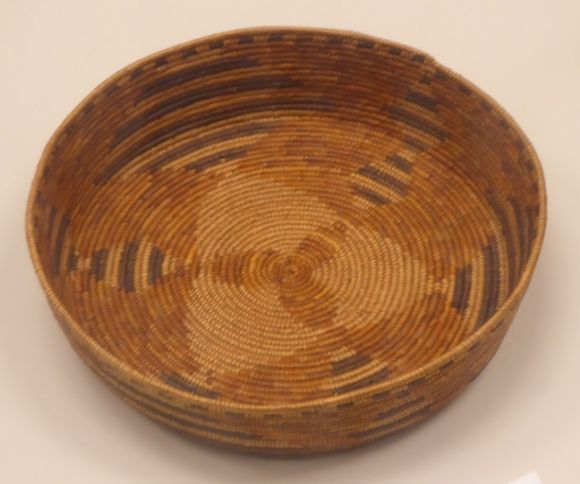 Shown above is a basket bowl (kávamal) made about 1900. The non-traditional shape of this basket indicates that it was made to sell.
Shown above is a basket bowl (kávamal) made about 1900. The non-traditional shape of this basket indicates that it was made to sell. 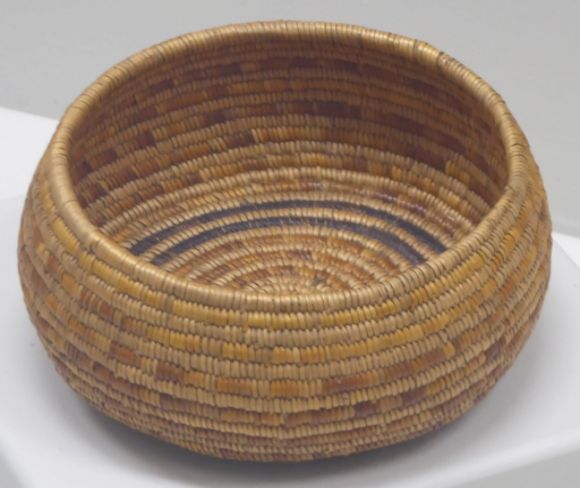 Shown above is a basket bowl (kávamal) made by Victoria about 1905-1915.
Shown above is a basket bowl (kávamal) made by Victoria about 1905-1915. 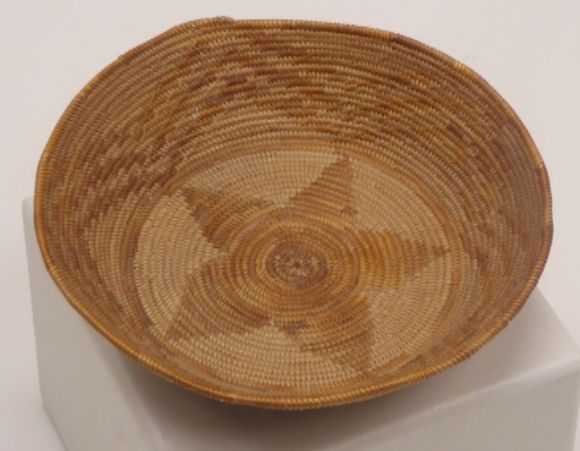 Shown above is a basket bowl made in the early twentieth century.
Shown above is a basket bowl made in the early twentieth century.
.
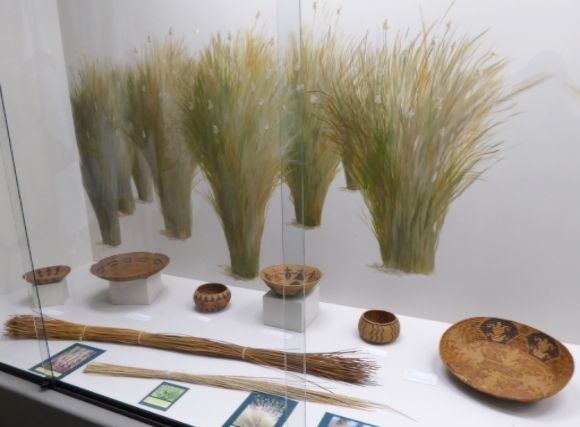 Weaving baskets is more than the mechanics of forming materials into a particular shape: basket makers requires knowledge of the plants which are used to make them.
Weaving baskets is more than the mechanics of forming materials into a particular shape: basket makers requires knowledge of the plants which are used to make them. 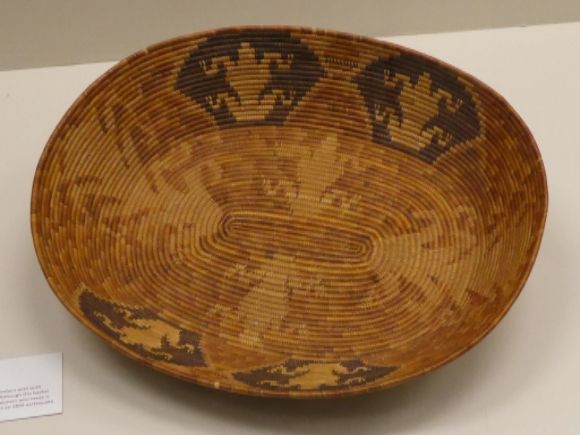 Shown above is an oval basket with a frog and plant design made in the late nineteenth century. The women who made this basket died at Soboba in an 1899 earthquake.
Shown above is an oval basket with a frog and plant design made in the late nineteenth century. The women who made this basket died at Soboba in an 1899 earthquake. 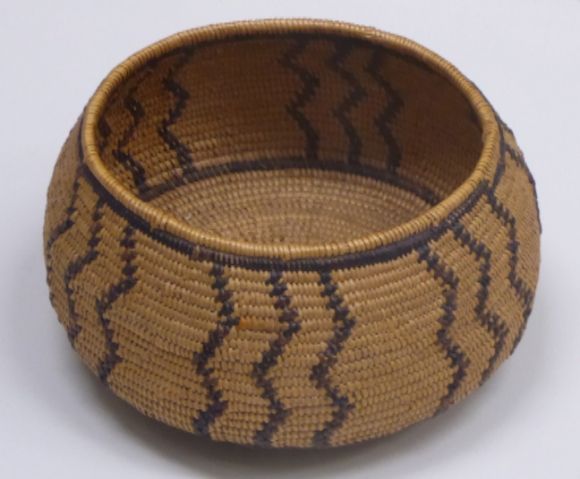 Shown above is a basket bowl made in the early twentieth century. The zigzag design may represent lightning.
Shown above is a basket bowl made in the early twentieth century. The zigzag design may represent lightning. 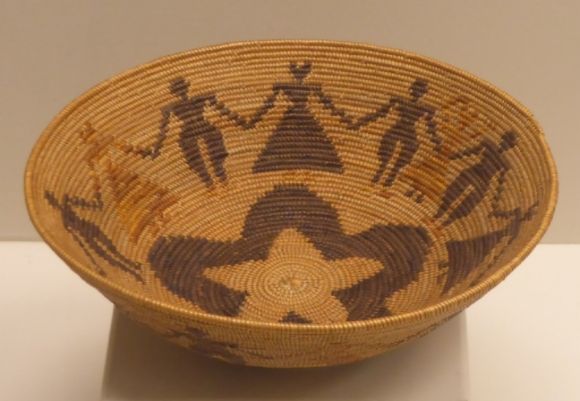 Shown above is a basket bowl made between 1890 and 1920. The design on this basket—a circle of men and women holding hands—has been adopted by the Soboba Elders as their logo.
Shown above is a basket bowl made between 1890 and 1920. The design on this basket—a circle of men and women holding hands—has been adopted by the Soboba Elders as their logo. 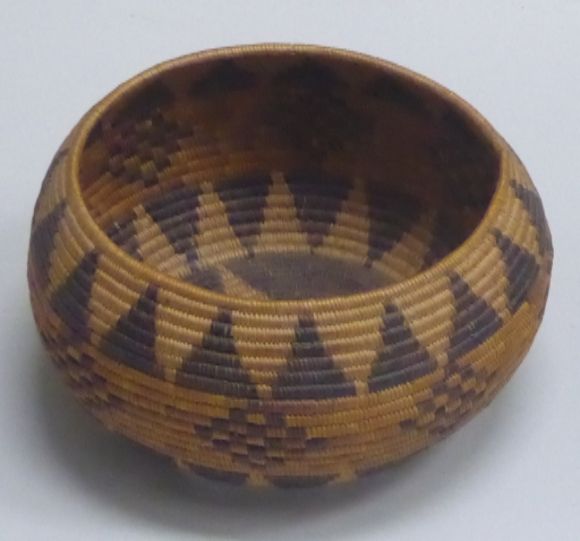 Shown above is a basket bowl made in the early twentieth century.
Shown above is a basket bowl made in the early twentieth century.
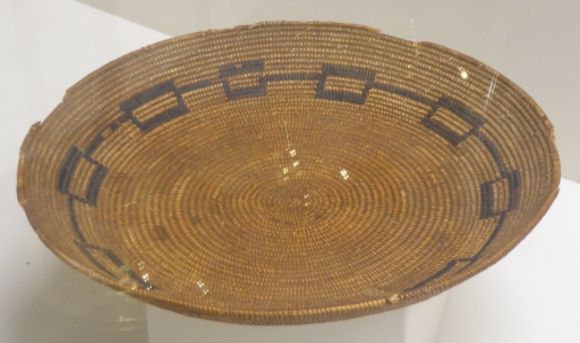 Shown above is a basket tray made in the late nineteenth century.
Shown above is a basket tray made in the late nineteenth century.
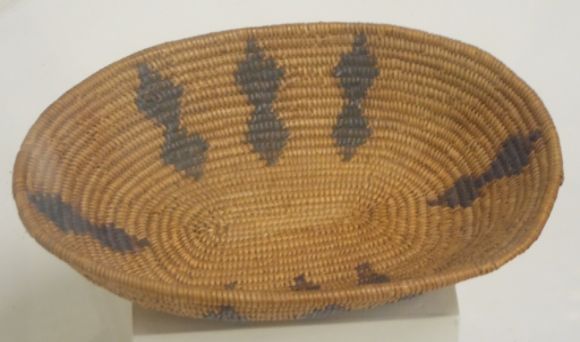 Shown above is an oval basket made in the early twentieth century.
Shown above is an oval basket made in the early twentieth century.
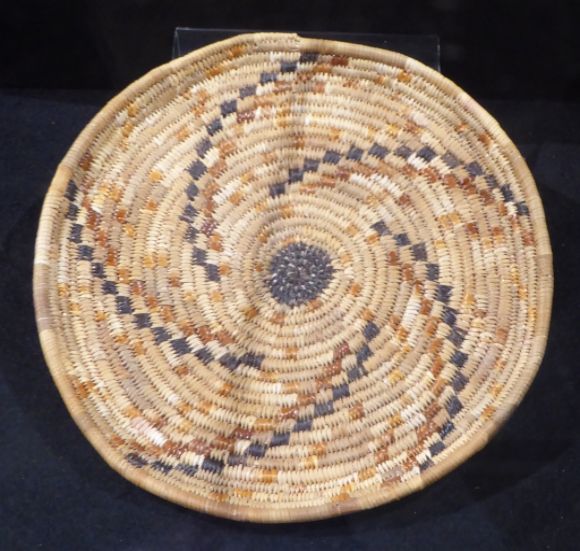 Shown above is a basket tray (kávashmal) made by Sue Hill about 2012. The basket features a whirlwind design.
Shown above is a basket tray (kávashmal) made by Sue Hill about 2012. The basket features a whirlwind design. 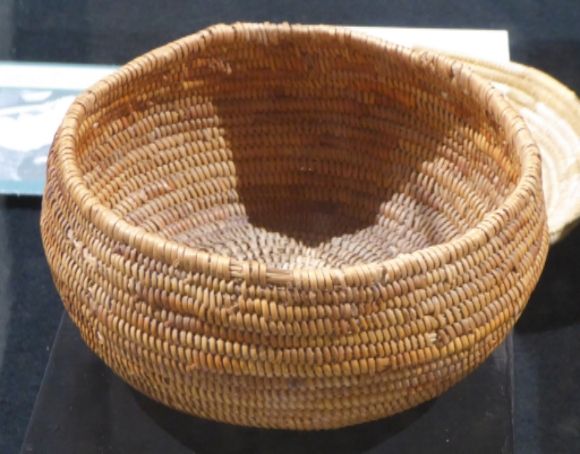 Shown above is a basket made by Elizabeth “Elisa” Mojado in the late twentieth century.
Shown above is a basket made by Elizabeth “Elisa” Mojado in the late twentieth century. 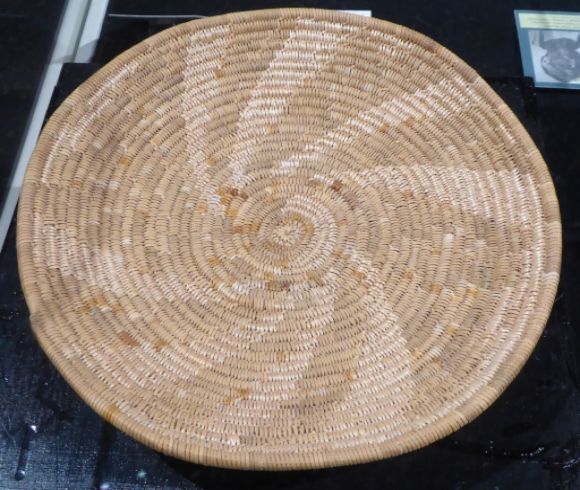 Shown above is a basket tray (kávashmal) made by Rosalie Valencia in 1987.
Shown above is a basket tray (kávashmal) made by Rosalie Valencia in 1987. 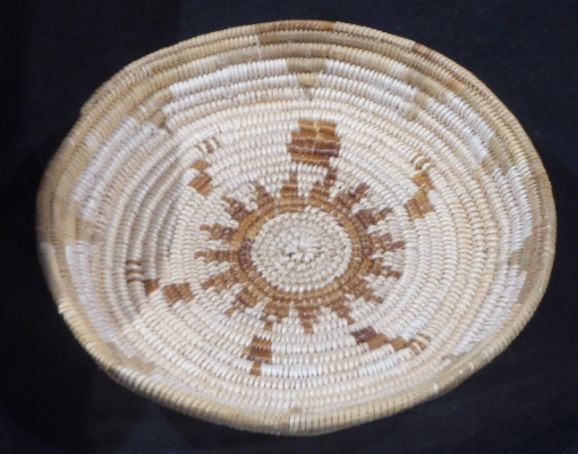 Shown above is a basket tray (kávashmal) made by Donna Largo. The basket was started in 1991 and finished in 1992. It features a sun-turtle design.
Shown above is a basket tray (kávashmal) made by Donna Largo. The basket was started in 1991 and finished in 1992. It features a sun-turtle design.
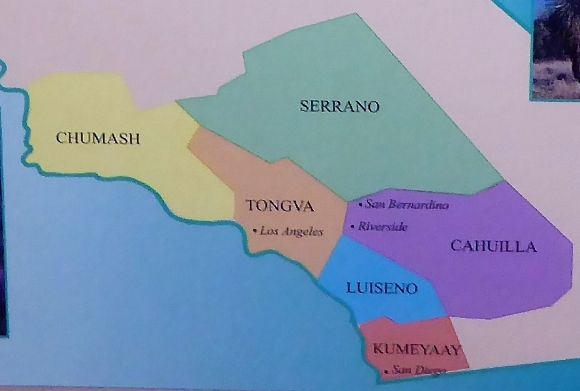
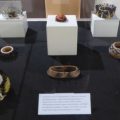
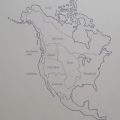
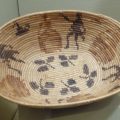
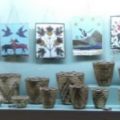
Leave a Reply